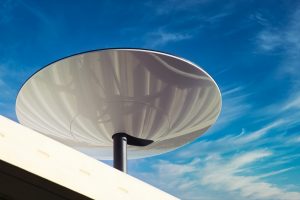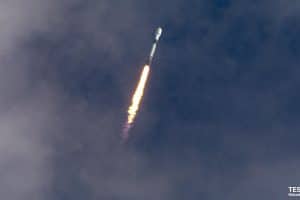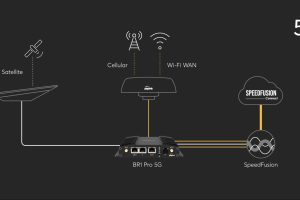SpaceX drone ship Just Read The Instructions (JRTI) has departed Port Canaveral in anticipation of the company’s sixth consecutive Starlink launch.
Known as Starlink 4-12, the mission will be SpaceX’s sixth uninterrupted Starlink launch – just shy of the company’s record of seven Starlink launches between commercial payloads. Though SpaceX would probably prefer to avoid month-long streaks without commercial launches, the company’s ability to use its own launch capabilities to deploy its Starlink constellation means that it can maintain valuable economies of scale while simultaneously launching satellites that generate some revenue.
With approximately 200,000 active subscribers, Starlink should already be generating around ~$250 million in annual revenue – perhaps enough to pay for anywhere from five to ten Starlink launches. Viewed another way, $250M would also pay the average annual salaries of more than 2300 employees. Even if it doesn’t come close to the $1-2 billion SpaceX is likely spending annually on Starlink development, deployment, and operations, it’s still better than the alternative that all other launch providers are left with: nothing.
In theory, while they have undeniably become mundane and begun to blur together, every new Starlink launch theoretically expands the network, adding additional capacity for new users (more revenue). Starlink 4-12 will be no different and should add approximately 50 new satellites to the constellation. Aside from being SpaceX’s eighth Starlink launch of 2022 and the 40th dedicated launch of operational Starlink satellites overall, Starlink 4-12 will be the East Coast Starlink mission in a while to use a more common northeasterly trajectory.
In 2022, SpaceX chose to move to an easterly trajectory so that Falcon boosters and fairings could land near the Bahamas, where seas tend to be calmer than those in the wintry mid-Atlantic. Safer recovery weather came at the cost of a slightly less efficient launch, requiring SpaceX to remove around 4-7 Starlink satellites from each mission. In theory, Starlink 4-12 should thus return to a more nominal 52 or 53 satellites.
According to Next Spaceflight, Falcon 9 B1051 will support the mission, becoming the first SpaceX booster of any kind to attempt its 12th orbital-class launch before midnight on Friday, March 18th.





